Design and Analysis of Independently Adjustable Large In-Pipe Robot for Long-Distance Pipeline
Abstract
1. Introduction
2. Overview of Robot
2.1. Design of Crawlers and Pantograph Bracket
2.2. Detection System and Self-Checking System
3. Long-Distance Stable Operation Model for In-Pipe Robot
3.1. Optimal Internal Force Scheme for Wall-Press In-Pipe Robot
3.2. Analysis of the Three-Crawlers Differential Rotation Model
3.3. The In-Pipe Actively Adjusting Strategy
4. Simulation and Experimental test
4.1. Static Simulation of Internal Force Model
4.2. Dynamics Simulation
4.3. Experiment
5. Conclusions
Author Contributions
Funding
Conflicts of Interest
References
- Wu, Q.; Lee, C.M. A Modified Leakage Localization Method Using Multilayer Perceptron Neural Networks in a Pressurized Gas Pipe. Appl. Sci. 2019, 9, 1954. [Google Scholar] [CrossRef]
- Liu, Y.; Chai, D.; Wang, X.; Chen, H. A Numerical Study of Axisymmetric Wave Propagation in Buried Fluid-Filled Pipes for Optimizing the Vibro-Acoustic Technique when Locating Gas Pipelines. Energies 2019, 12, 3707. [Google Scholar] [CrossRef]
- Wang, B.G.; Ai, C.S.; Zhao, H.H.; Wang, N.; Zhang, H.; Cai, Z.L. Pipeline Manmade Damage Prevention Monitoring and Its Locating System; Harbin Institute Technology Publishers: Harbin, China, 2004; pp. 968–972. [Google Scholar]
- Wang, L.N.; Wang, J.; Gao, X.W.; Wang, M.S. Summary of Detection and Location for Oil and Gas Pipeline Leak. In Proceedings of the 2013 25th Chinese Control and Decision Conference, Guiyang, China, 25–27 May 2013; IEEE: New York, NY, USA, 2013; pp. 821–826. [Google Scholar]
- Archila, J.F.; Becker, M.; Soc, I.C. Study of Robots to Pipelines, Mathematical Models and Simulation. In Proceedings of the 2013 Latin American Robotics Symposium and Competition, Arequipa, Peru, 21–23 October 2013; IEEE Computer Soc: Los Alamitos, CA, USA, 2013; pp. 18–23. [Google Scholar]
- Ren, T.; Zhang, Y.; Li, Y.; Chen, Y.; Liu, Q. Driving Mechanisms, Motion, and Mechanics of Screw Drive In-Pipe Robots: A Review. Appl. Sci. 2019, 9, 2514. [Google Scholar] [CrossRef]
- Chang, F.S.; Hwang, L.T.; Liu, C.F.; Wang, W.S.; Lee, J.N.; Wang, S.M.; Cho, K.Y. Design of a Pipeline Inspection Robot with Belt Driven Ridged Cone Shaped Skate Model. In Proceedings of the 2015 IEEE International Conference on Robotics and Biomimetics (ROBIO), Zhuhai, China, 6–9 December 2015; IEEE: New York, NY, USA, 2015; pp. 787–792. [Google Scholar]
- Yang, S.U.; Kim, H.M.; Suh, J.S.; Choi, Y.S.; Mun, H.M.; Park, C.M.; Moon, H.; Choi, H.R. Novel Robot Mechanism Capable of 3D Differential Driving Inside Pipelines. In Proceedings of the 2014 Ieee/Rsj International Conference on Intelligent Robots and Systems, Chicago, IL, USA, 18 September 2014; IEEE: New York, NY, USA, 2014; pp. 1944–1949. [Google Scholar]
- Choi, H.; Ryew, S. Robotic system with active steering capability for internal inspection of urban gas pipelines. Mechatronics 2002, 12, 713–736. [Google Scholar] [CrossRef]
- Yoon-Gu, K.; Dong-Hwan, S.; Jeon-Il, M.; Jinung, A. Design and implementation of an optimal in-pipe navigation mechanism for a steel pipe cleaning robot. In Proceedings of the 2011 8th International Conference on Ubiquitous Robots and Ambient Intelligence (URAI 2011), Songdo ConventiA, Incheon, Korea, 23–26 November 2011; pp. 772–773. [Google Scholar]
- Mateos, L.A.; Kai, Z.; Vincze, M. Towards efficient pipe maintenance: DeWaLoP in-pipe robot stability controller. In Proceedings of the 2012 IEEE International Conference on Mechatronics and Automation (ICMA), Chengdu, China, 5–8 August 2012; pp. 1–6. [Google Scholar]
- Mateos, L.A.; Dominguez, M.R.Y.; Vincze, M. Automatic In-pipe Robot Centering from 3D to 2D Controller Simplification. In Proceedings of the 2013 Ieee/Rsj International Conference on Intelligent Robots and Systems, Tokyo, Japan, 3–7 November 2013; Amato, N., Ed.; IEEE: New York, NY, USA, 2013; pp. 258–265. [Google Scholar]
- Kim, D.K.; Yoo, H.R.; Yoo, J.S.; Kim, D.K.; Cho, S.H.; Koo, S.J.; Woo, R.Y.; Jung, H.K. Development of MFL System for In-Pipe Robot for Unpiggable Natural Gas Pipelines. In Proceedings of the 2013 10th International Conference on Ubiquitous Robots and Ambient Intelligence, Jeju, Korea, 30 May 2013; IEEE: New York, NY, USA, 2013; pp. 51–54. [Google Scholar]
- Kim, H.M.; Yoo, H.R.; Park, G.S. Analysis of the Magnetic Characteristics in MFL Type NDT System for Inspecting Gas Pipelines. In Lecture Notes in Electrical Engineering; Springer Science and Business Media LLC: Berlin, Germany, 2016; Volume 415, pp. 319–324. [Google Scholar]
- Zhu, W.-F.; Chen, X.-J.; Li, Z.-W.; Meng, X.-Z.; Fan, G.; Shao, W.; Zhang, H.-Y. A SAFT Method for the Detection of Void Defect inside a Ballastless Track Structure Using Ultrasonic Array Sensors. Sensors 2019, 19, 4677. [Google Scholar] [CrossRef] [PubMed]
- Sam, M.A.I.M.N.; Jin, Z.; Oogane, M.; Ando, Y. Investigation of a Magnetic Tunnel Junction Based Sensor for the Detection of Defects in Reinforced Concrete at High Lift-Off. Sensors 2019, 19, 4718. [Google Scholar] [CrossRef]
- Zhang, L.; Wang, X. Stable Motion Analysis and Verification of a Radial Adjustable Pipeline Robot. In Proceedings of the 2016 IEEE International Conference on Robotics and Biomimetics, Qingdao, China, 3–7 December 2016; IEEE: New York, NY, USA, 2016; pp. 1023–1028. [Google Scholar]
- Kakogawa, A.; Ma, S.G.; Hirose, S. An In-pipe Robot with Underactuated Parallelogram Crawler Modules. In Proceedings of the 2014 IEEE International Conference on Robotics and Automation, Hong Kong, China, 31 May–7 June 2014; IEEE: New York, NY, USA, 2014; pp. 1687–1692. [Google Scholar]
- Ciszewski, M.; Buratowski, T.; Giergiel, M.; Malka, P.; Kurc, K. Virtual Prototyping, Design and Analysis of an in-pipe Inspection Mobile Robot. J. Theor. Appl. Mech. 2014, 52, 417–429. [Google Scholar]
- Zhang, Y.; Yan, G. In-pipe inspection robot with active pipe-diameter adaptability and automatic tractive force adjusting. Mech. Mach. Theory 2007, 42, 1618–1631. [Google Scholar] [CrossRef]
- Wang, H.Y.; Li, H.Z.; Wang, T.; Rui, Q.; Ge, J.T.; Zhou, G.M.; Yuan, Y. The Analysis and Test for the Steering Process of Tracked Vehicles on the Hard Road. In Proceedings of the 2nd International Conference on Advances in Computer Science and Engineering, Dubai, UAE, 17–18 March 2013; Lee, G., Ed.; Atlantis Press: Paris, France, 2013; Volume 42, pp. 254–258. [Google Scholar]
- Park, J.; Hyun, D.; Cho, W.-H.; Kim, T.-H.; Yang, H. Normal-Force Control for an In-Pipe Robot According to the Inclination of Pipelines. IEEE Trans. Ind. Electron. 2010, 58, 5304–5310. [Google Scholar] [CrossRef]
- Garber, M.; Wong, J. Prediction of ground pressure distribution under tracked vehicles—II. Effects of design parameters of the track-suspension system on ground pressure distribution. J. Terramechanics 1981, 18, 71–79. [Google Scholar] [CrossRef]
- Keller, T.; Arvidsson, J. A model for prediction of vertical stress distribution near the soil surface below rubber-tracked undercarriage systems fitted on agricultural vehicles. Soil Tillage Res. 2016, 155, 116–123. [Google Scholar] [CrossRef]
- Özdemir, M.N.; Kılıç, V.; Ünlüsoy, Y.S. A new contact & slip model for tracked vehicle transient dynamics on hard ground. J. Terramechanics 2017, 73, 3–23. [Google Scholar] [CrossRef]
- Qu, Y.; Durdevic, P.; Yang, Z. Smart-Spider: Autonomous Self-driven In-line Robot for Versatile Pipeline Inspection. The authors would like to the support from Danish Hydrocarbon Research and Technology Centre (DHRTC) through DHRTC Radical Project Programme. IFAC PapersOnLine 2018, 51, 251–256. [Google Scholar] [CrossRef]
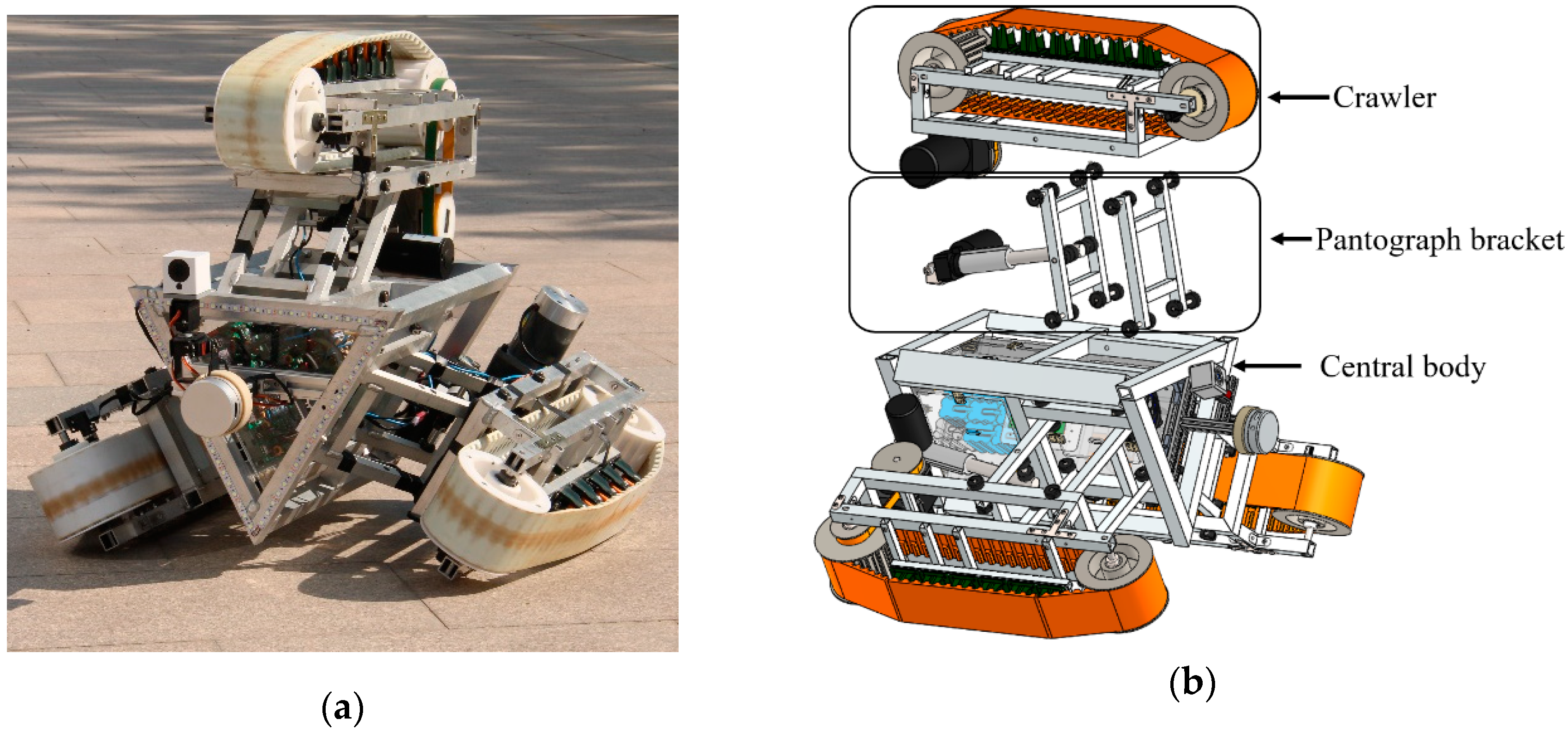

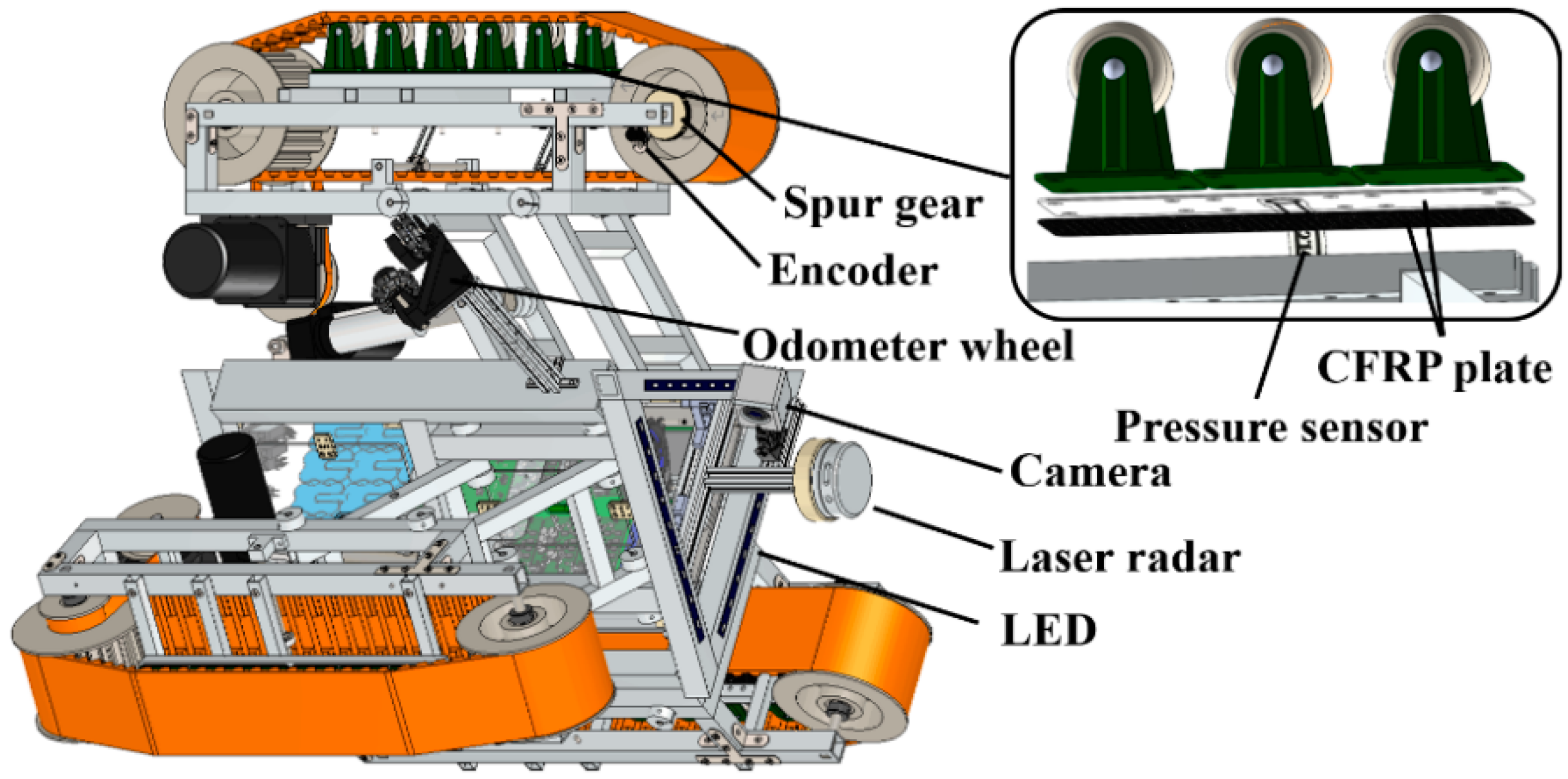
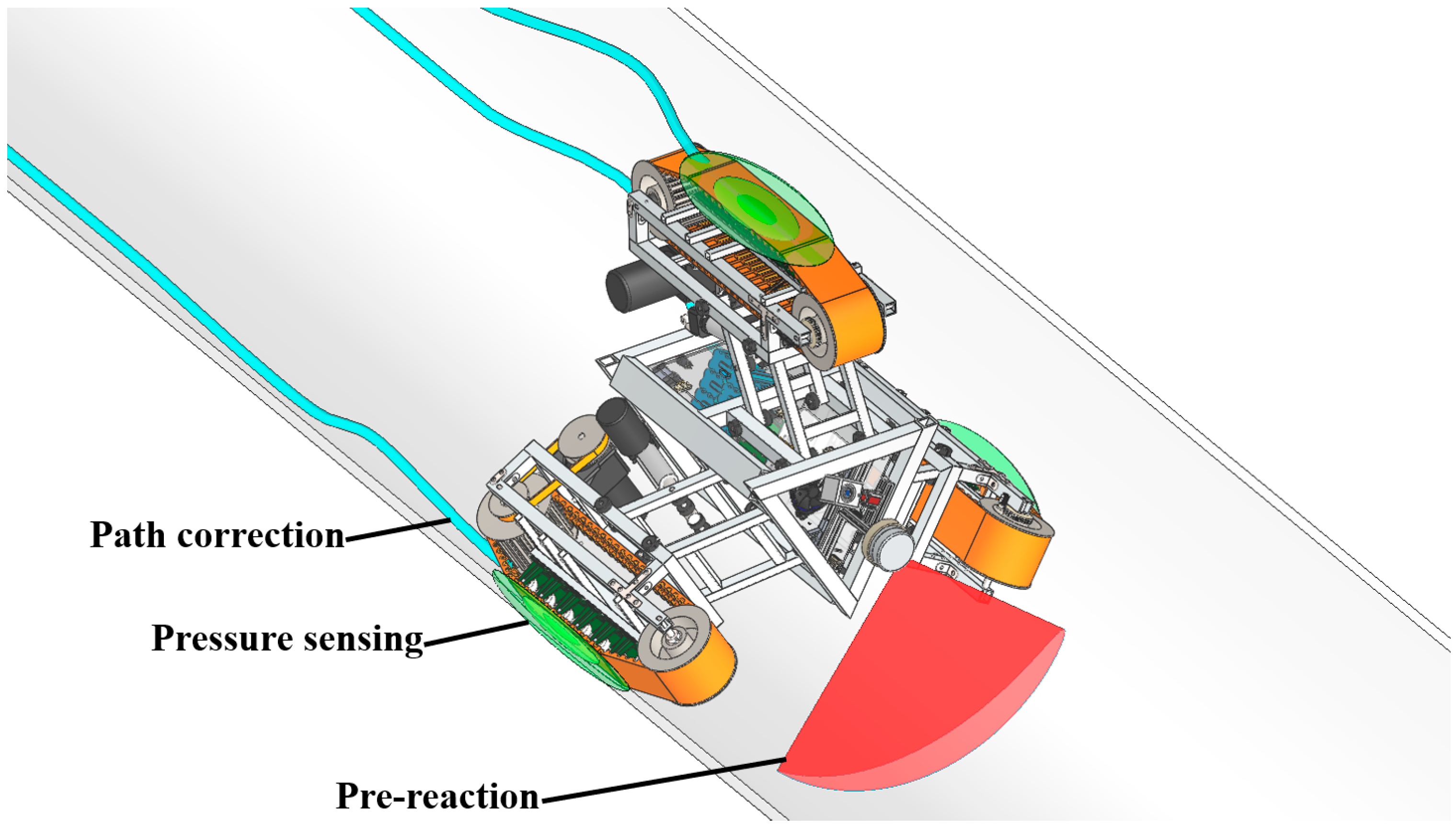

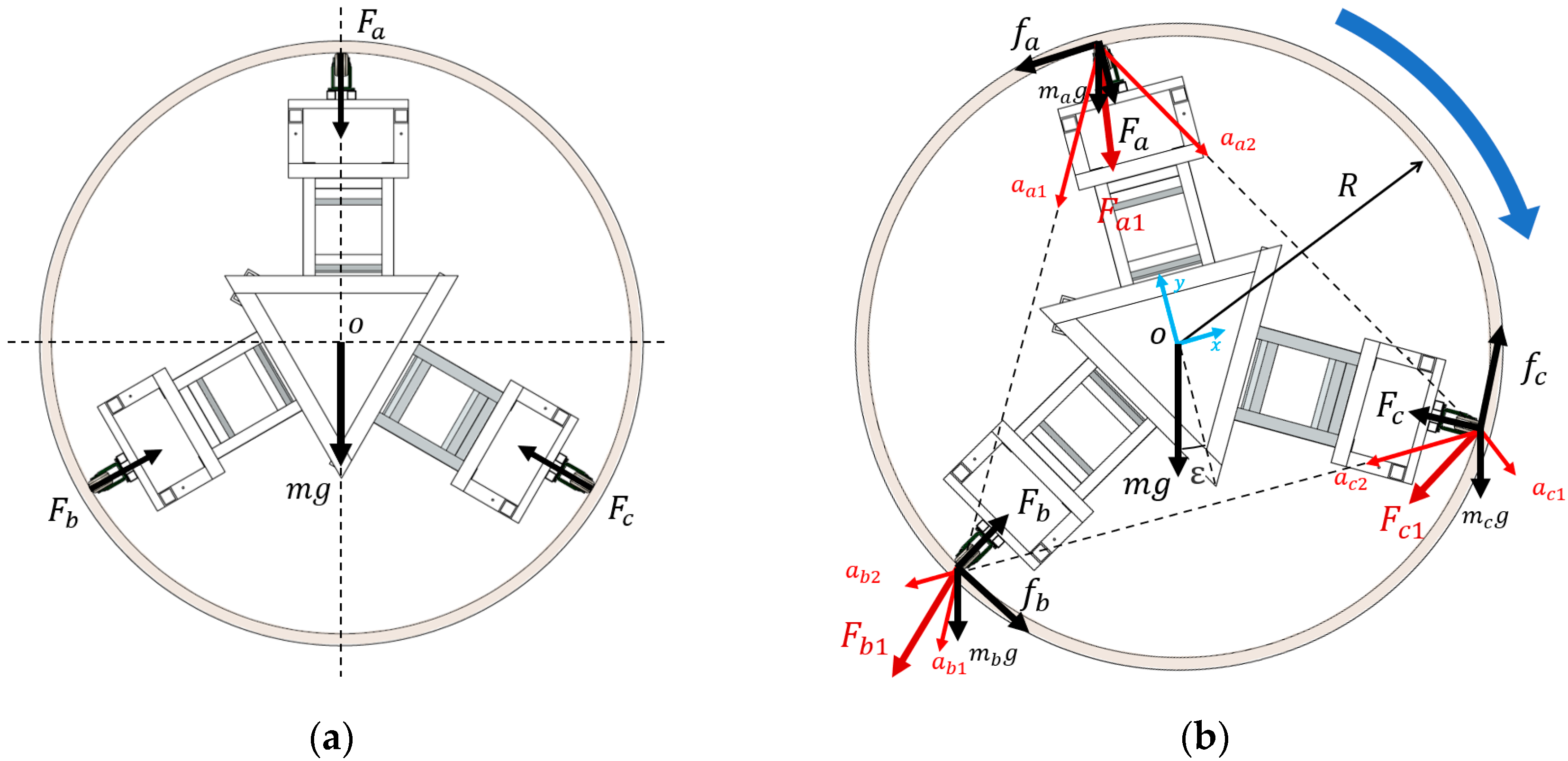
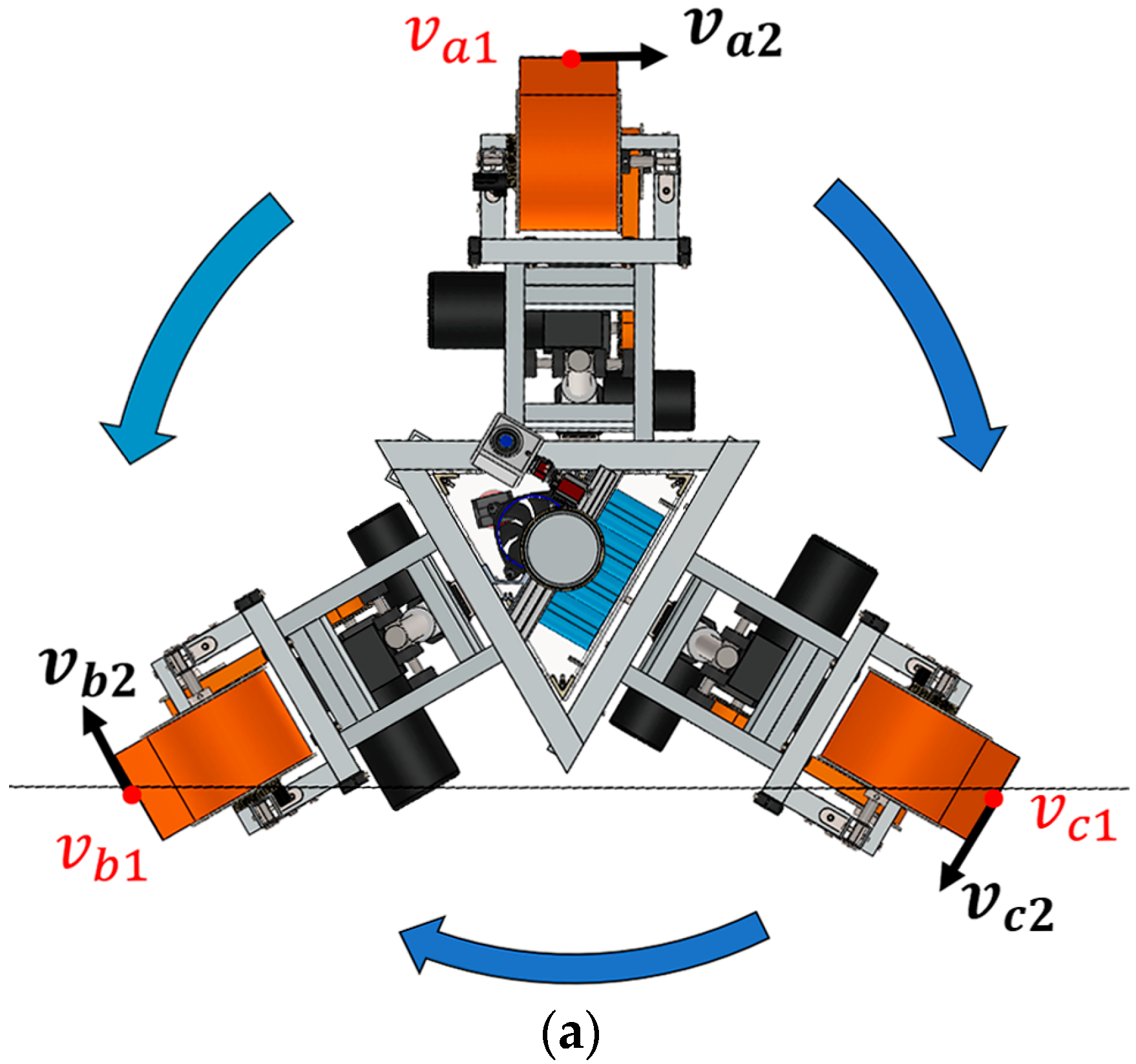
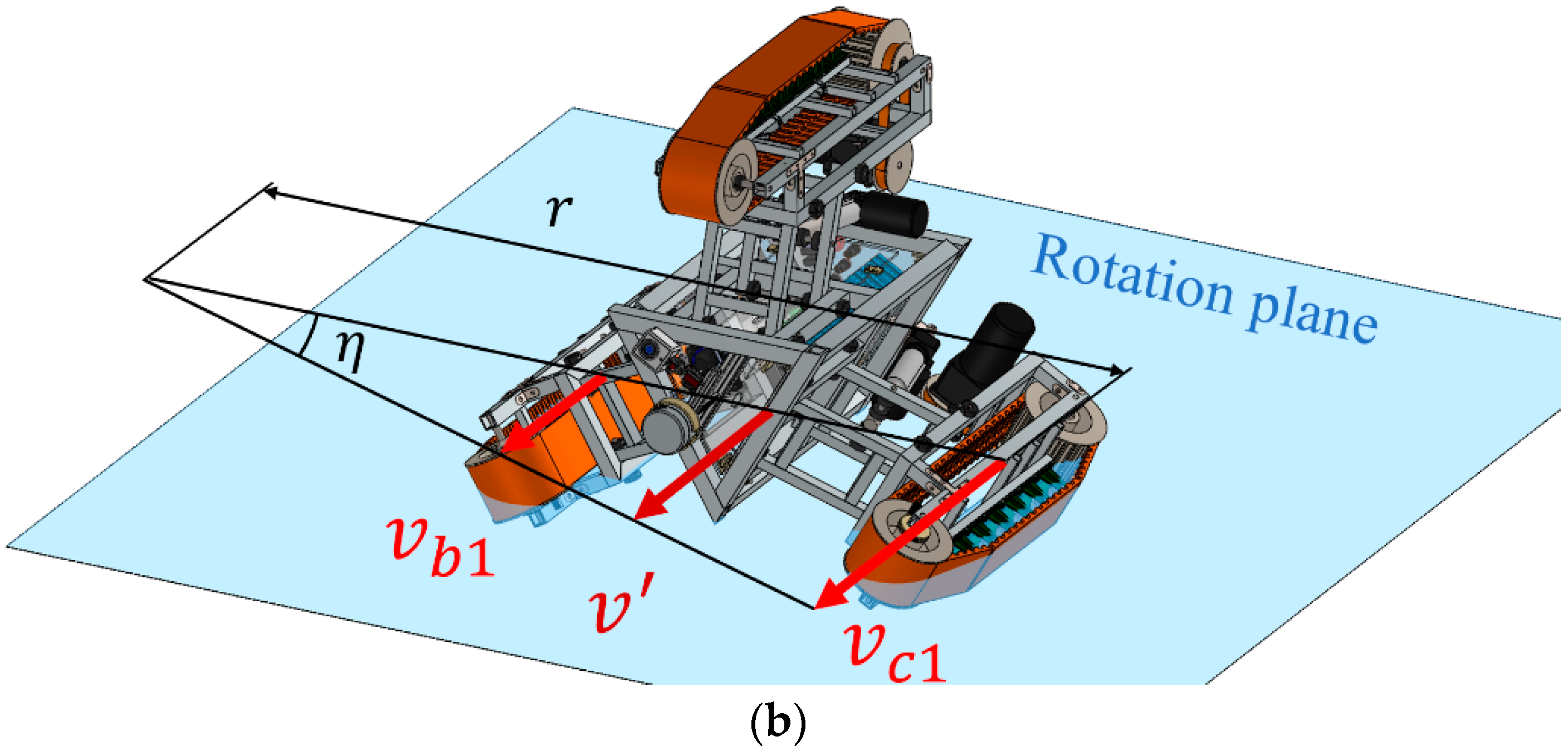
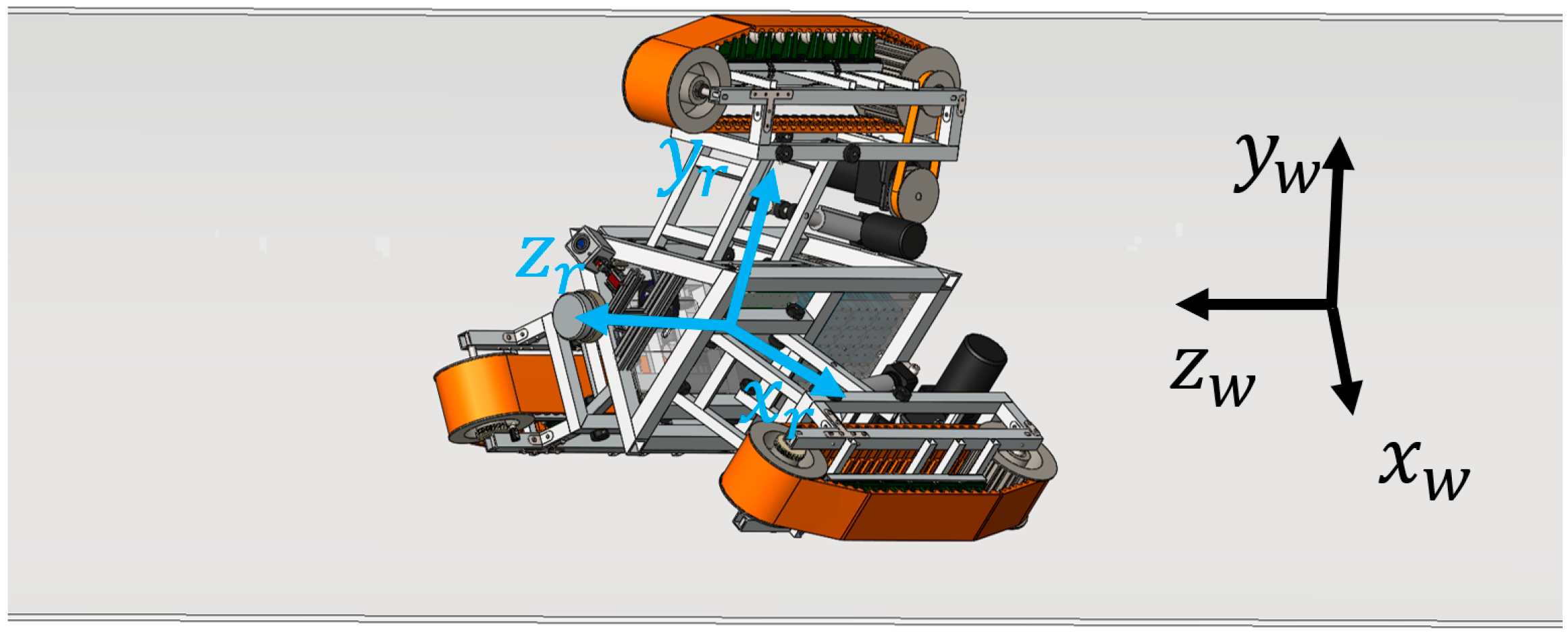

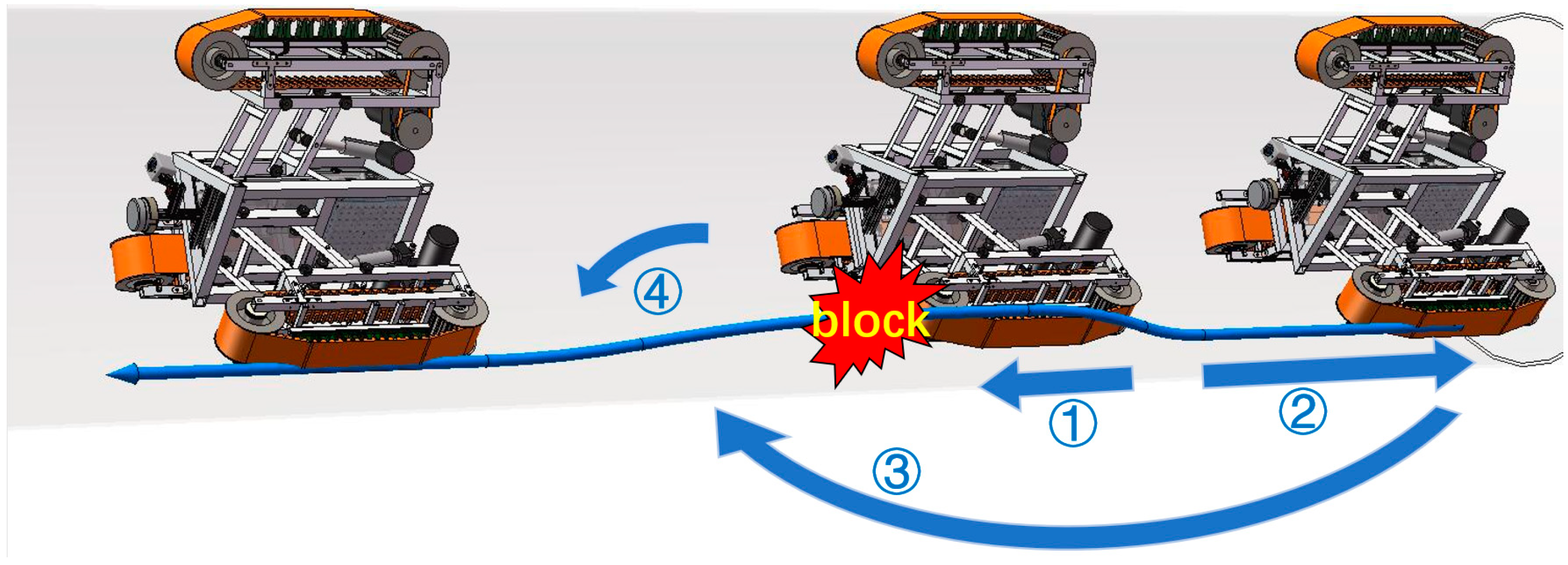

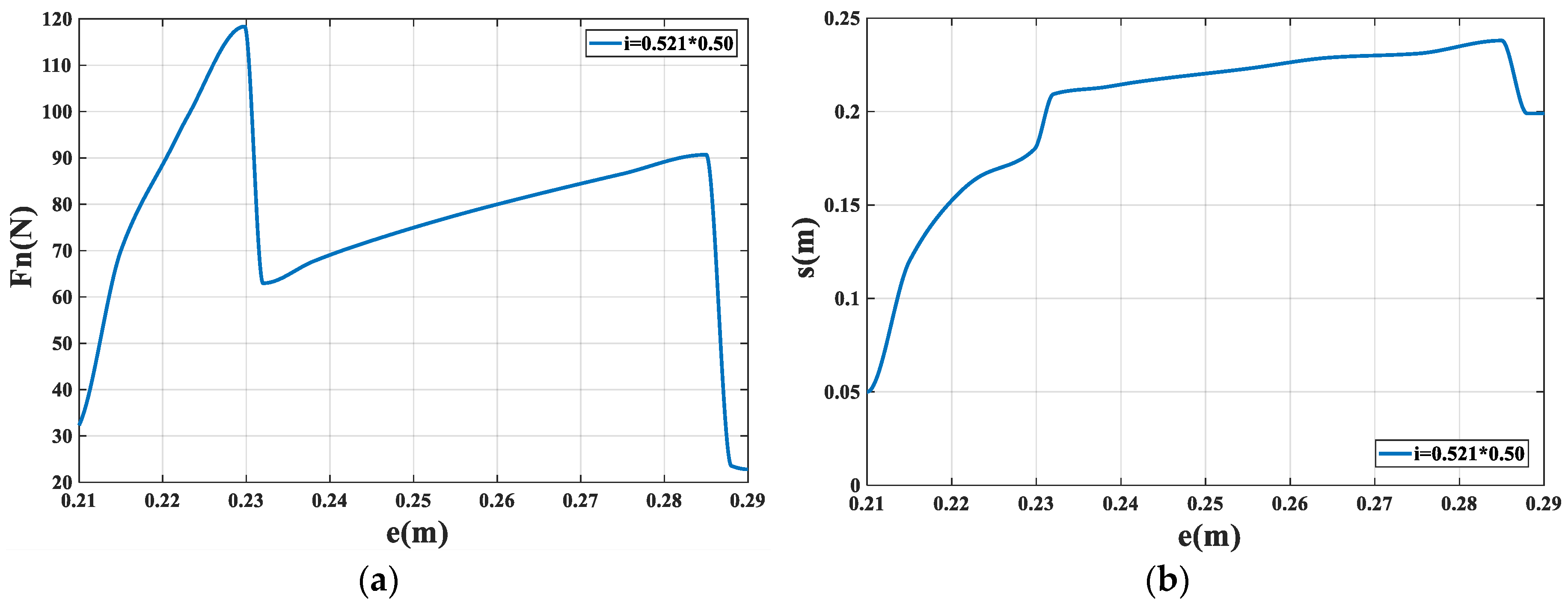
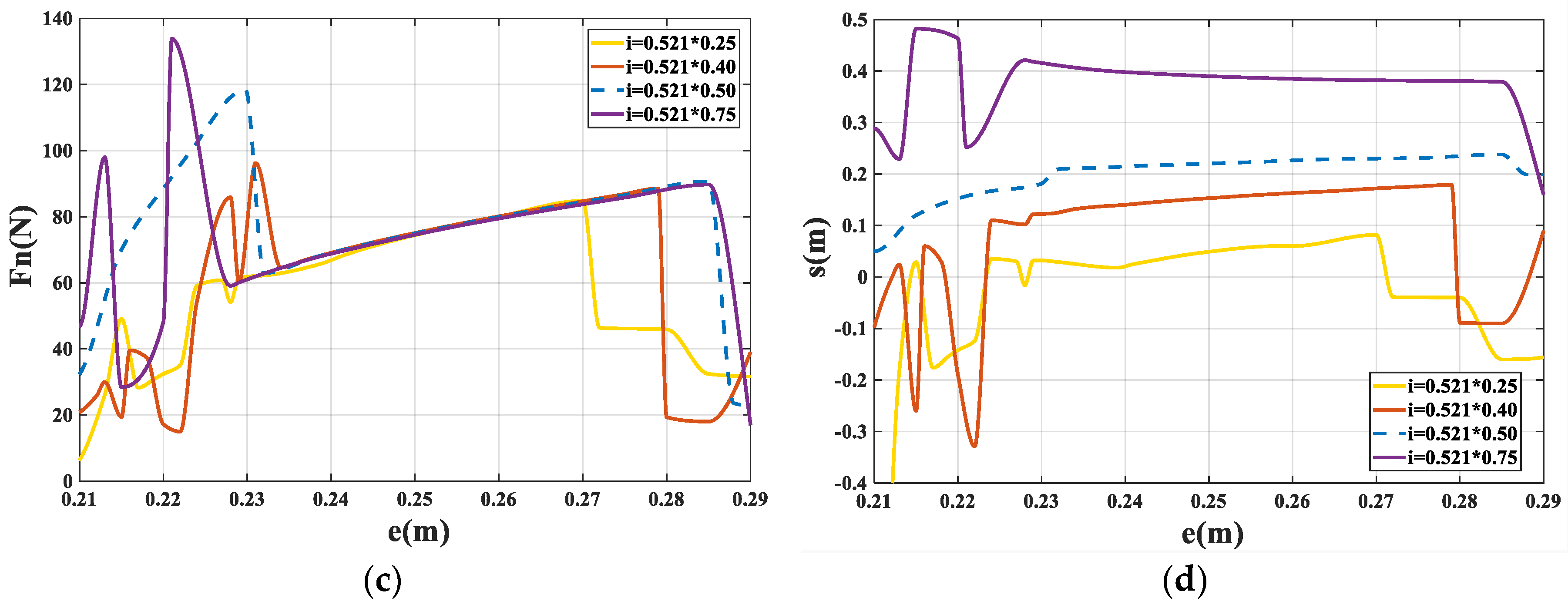
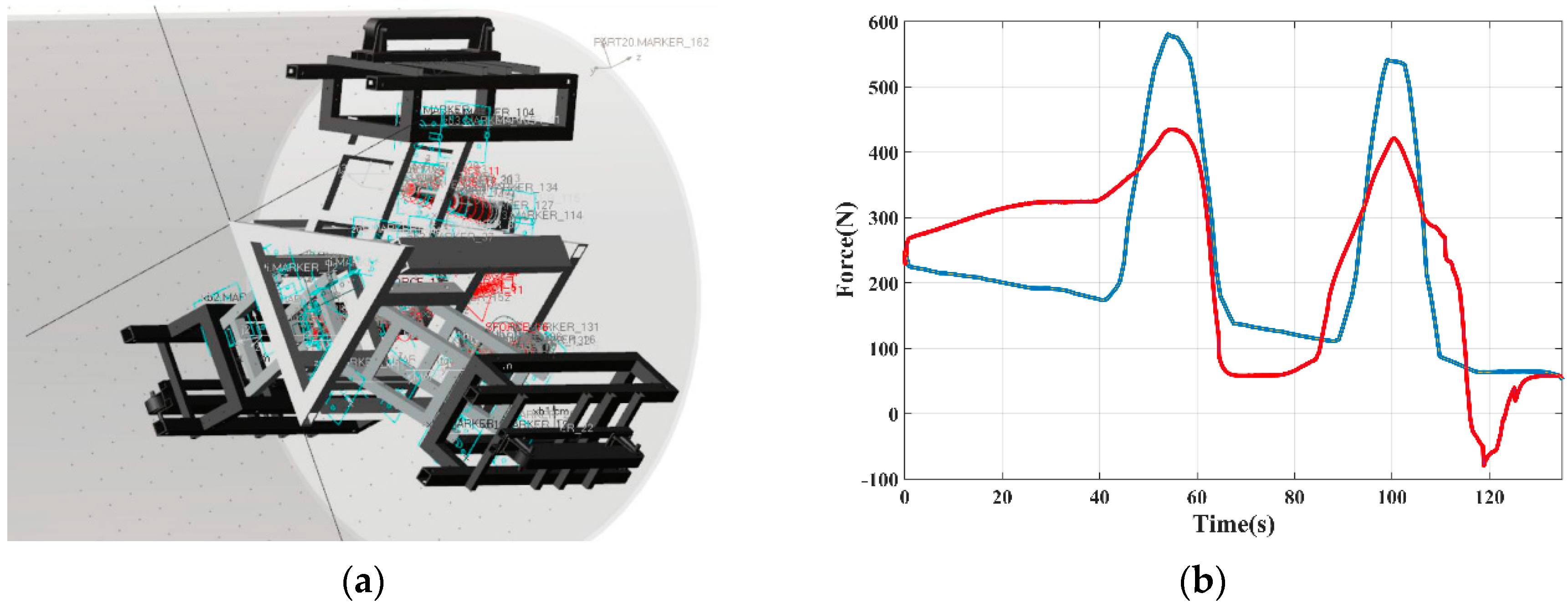
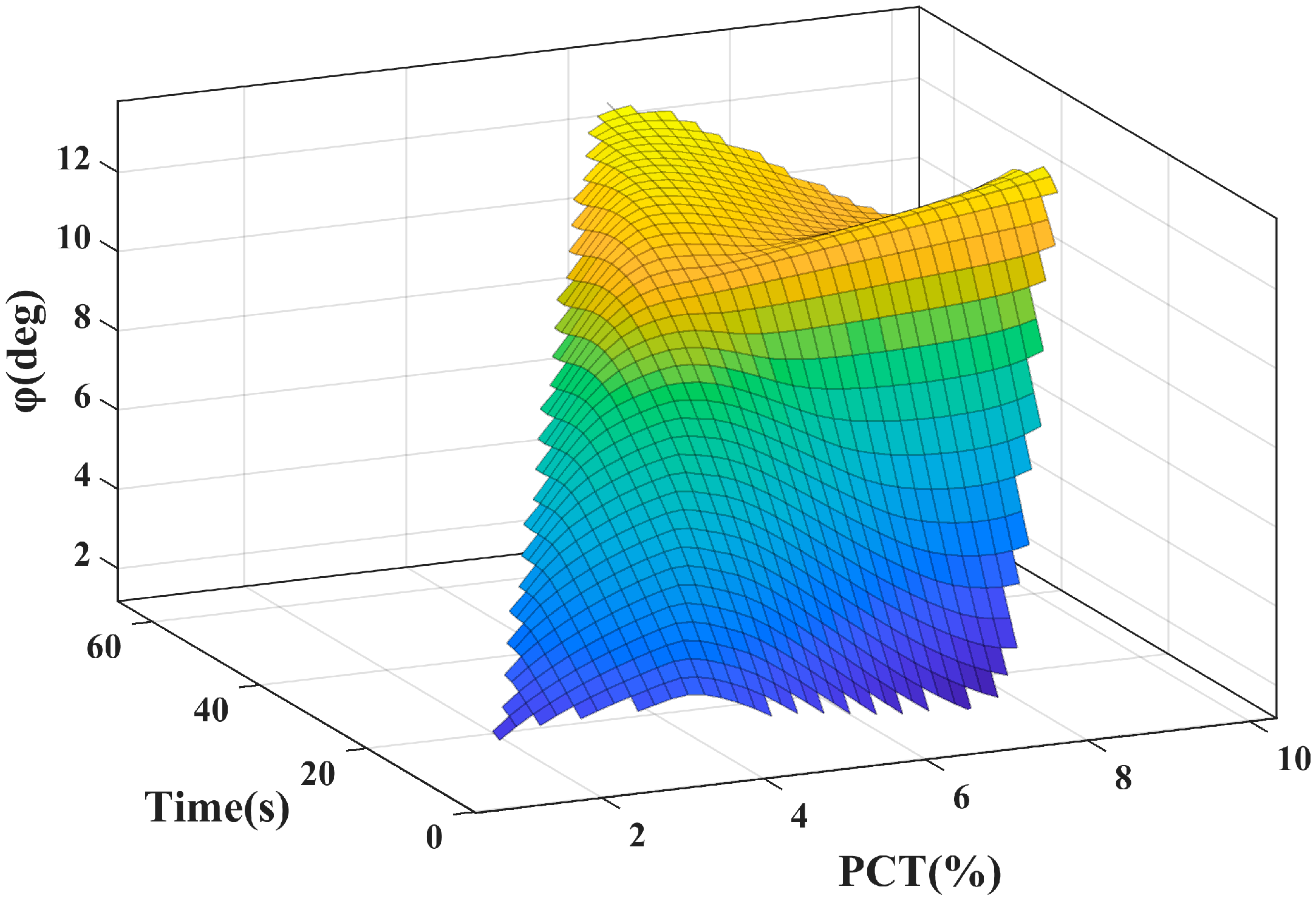





© 2020 by the authors. Licensee MDPI, Basel, Switzerland. This article is an open access article distributed under the terms and conditions of the Creative Commons Attribution (CC BY) license (http://creativecommons.org/licenses/by/4.0/).
Share and Cite
Zhao, W.; Zhang, L.; Kim, J. Design and Analysis of Independently Adjustable Large In-Pipe Robot for Long-Distance Pipeline. Appl. Sci. 2020, 10, 3637. https://doi.org/10.3390/app10103637
Zhao W, Zhang L, Kim J. Design and Analysis of Independently Adjustable Large In-Pipe Robot for Long-Distance Pipeline. Applied Sciences. 2020; 10(10):3637. https://doi.org/10.3390/app10103637
Chicago/Turabian StyleZhao, Wentao, Liang Zhang, and Jongwon Kim. 2020. "Design and Analysis of Independently Adjustable Large In-Pipe Robot for Long-Distance Pipeline" Applied Sciences 10, no. 10: 3637. https://doi.org/10.3390/app10103637
APA StyleZhao, W., Zhang, L., & Kim, J. (2020). Design and Analysis of Independently Adjustable Large In-Pipe Robot for Long-Distance Pipeline. Applied Sciences, 10(10), 3637. https://doi.org/10.3390/app10103637




